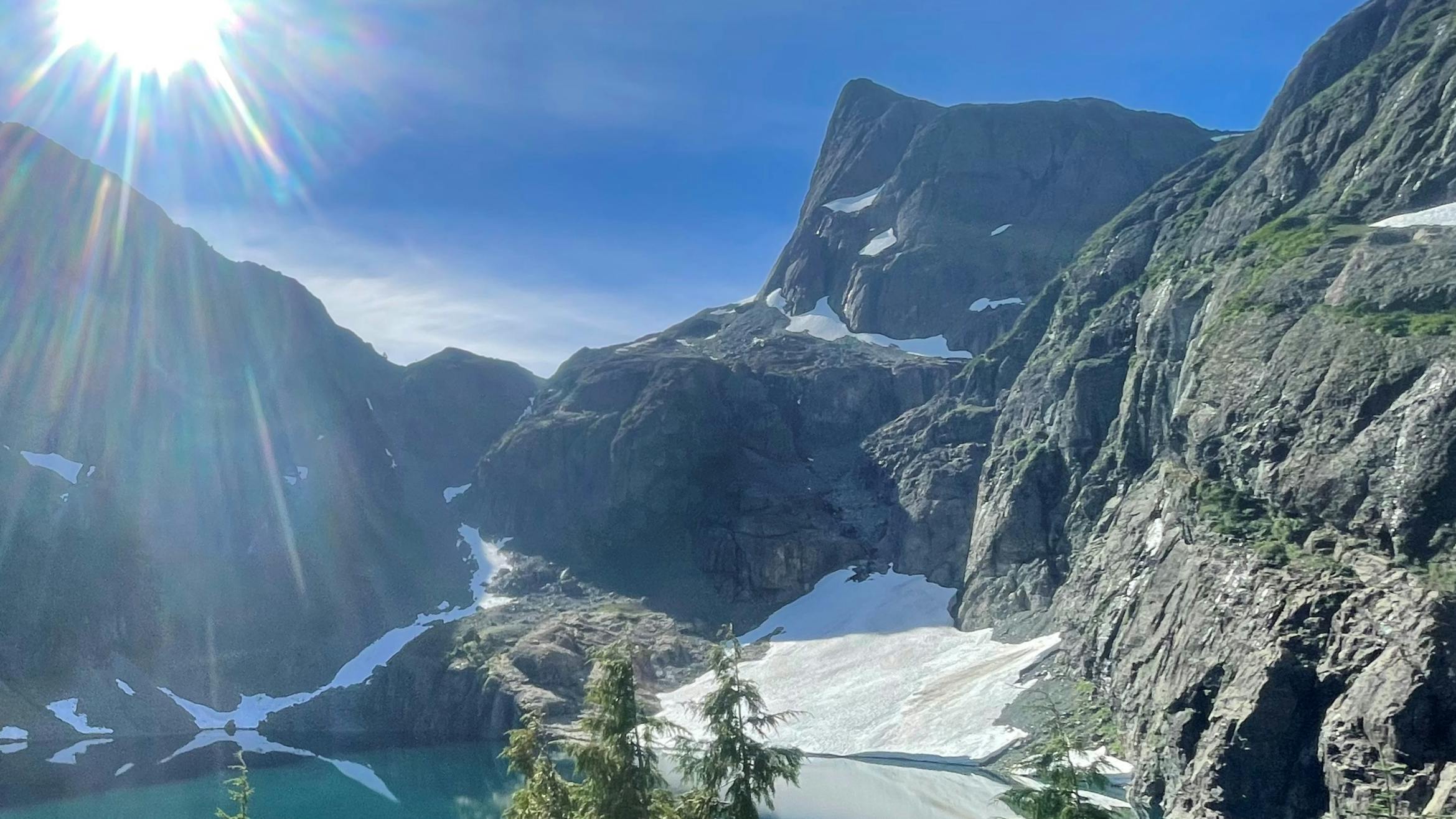May 2025: Understanding ecosystems in ‘Namgis territory
The forests of ‘Namgis territory are full of life. Walking through our forests, tall trees like Western Hemlock, Western Redcedar, and Douglas Fir can offer shade, while plants like Devil’s Club, Cow Parsnip, and Salal grow along the forest floor for use in traditional medicines. You might also spot black bears, elk, or even smaller creatures like the banana slug or the pacific tree frog.
Together, all these plants, animals, and organisms, alongside the weather and landscapes, work together as part of an ecosystem, which is a living system where everything is connected.
How is an ecosystem studied?
For generations, ‘Namgis have passed down knowledge of plants, animals, and the land. Today, this traditional knowledge can be paired with tools like the Biogeoclimatic Ecosystem Classification (BEC) to better understand and describe our ecosystems.
How do you use the BEC system?
The BEC system helps group similar areas of the ‘Namgis landscape into ecosystems based on three main criteria:
- Climate – is it wet, dry, cold?
- Vegetation – what kind of plants grow there?
- Site characteristics – what is the soil types, elevation and slope?
By understanding these three criteria, ecosystems can be grouped into:

Why does understanding our ecosystems matter?
Understanding ecosystems helps us make informed decisions about how we manage the land. For the T’łuładi Project, this knowledge supports better forestry planning by helping protect biodiversity, cultural sites, caves and karst, fish habitat, and forest cover for wildlife. When we look at forest conservation, we look at what proportion is already protected to ensure we have good representation of all ecosystems in ‘Namgis territory. For example, early industrial forestry without a lot of rules targeted the valley bottom ecosystems in the low elevation ecosystems. A lot of work needs to be focused on protecting these immature forests, into the future especially when you consider their importance to salmon. These need to be protected and allowed to grow older for the benefit of future generations.

